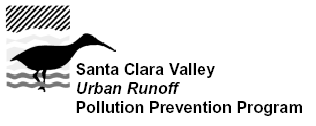Stormwater Runoff
- Vehicle Brake Pads
- Architectural Copper
- Pool/Spa/Fountain Algaecides
- Copper Pesticides
- Industrial Copper Use
- Soil Erosion
- Mobile Cleaning
- Vehicle Washing
- Vehicle Services
Discharges to POTWs
Shoreline Activities
Cooling Towers
Copper and zinc are common materials found in cooling water system components and piping; both are susceptible to corrosion. Several metals (e.g., copper, zinc, chromium, and tributyltin) have been used as cooling water treatment chemicals for control of corrosion, scaling, or biological growths. Currently, the primary source of copper in cooling tower blowdown is from corrosion of copper-containing piping and materials in the tower systems. In addition, background concentrations of copper (within the potable water supply used for cooling) will increase depending on a tower's operation (cycles of concentration). In some systems, copper concentrations may be relatively low but the volumes discharged relatively high. As a result, cooling towers may generate loadings at levels of concern.
Stormwater Control Measures
Good housekeeping practices (e.g., proper container storage, clean-up of spills, sealing of floor drains, etc.) are generally the most feasible and effective measures for preventing pollutants from entering the storm drain system. It is unlikely that copper-containing chemicals and/or wastes will be introduced to the storm drain system if good housekeeping practices are maintained. Best management practices which address stormwater pollution from various facility activities or procedures are provided within the Site Source Control, Design, and Waste Management Section.
Wastewater Control Measures
Copper, zinc, chromium, and tributyltin can potentially be found in wastewaters (i.e., cooling tower blowdown) discharged from some cooling water systems to POTWs. Control measures to reduce discharges of metals to POTWs include reducing or eliminating the use of cooling water treatment chemicals (which contain metals) and minimizing the corrosivity of the cooling tower water. On December 11, 1995, the California Department of Pesticide Regulation enacted a San Francisco Bay area prohibition on the sale and use of tributyltin-containing cooling water additives. Chlorine based compounds are more widely used for control of biological growths in cooling towers than copper or tributyltin-based chemicals.
Best Management Practices
Best management practices and control measures to reduce metal discharges and increase water efficiency from cooling towers include:
California
- Palo Alto RWQCP-Cooling Water Systems Source Control Program - This information sheet prepared by the Palo Alto RWQCP describes cooling water discharges and best management practices to reduce metal discharges to the sanitary sewer.
- City of San Jose - Chemical Additives and Water Conservation Practices for Cooling Towers - This information sheet prepared by the City of San Jose discusses the ban of tributyltin-containing additives within the San Francisco Bay area, provides recommended maintenance practices to minimize metal discharges and recommends water conservation practices.
Organizations/Agencies
- Water Efficiency: Water Management Options - This information fact sheet prepared by the North Carolina Department of Environment and Natural Resources describes measures for optimizing (to save water) the operation and maintenance of cooling water systems.
- Water
Efficiency - Cooling Tower Management - This BMP fact sheet prepared
by United States Department of Energy provides water efficiency best
management practices for cooling towers.
